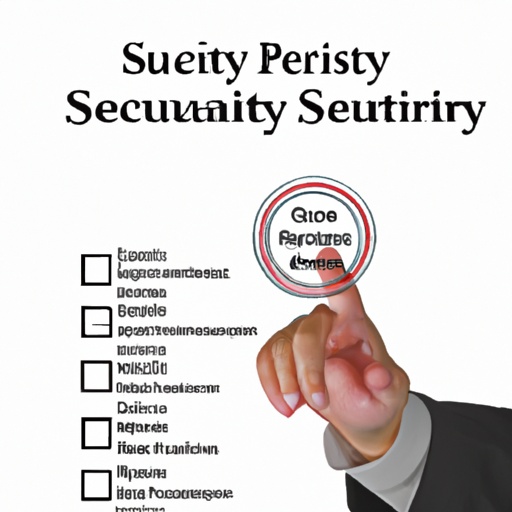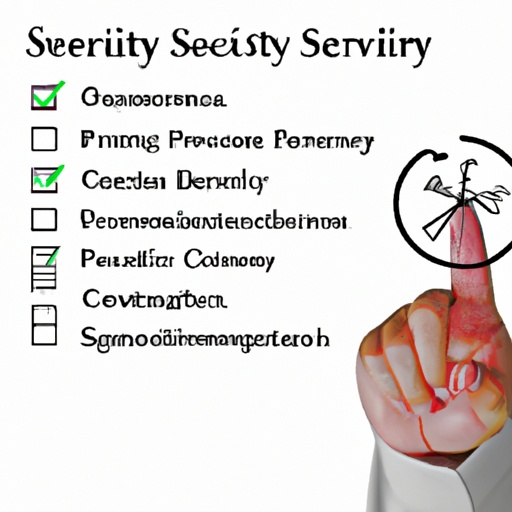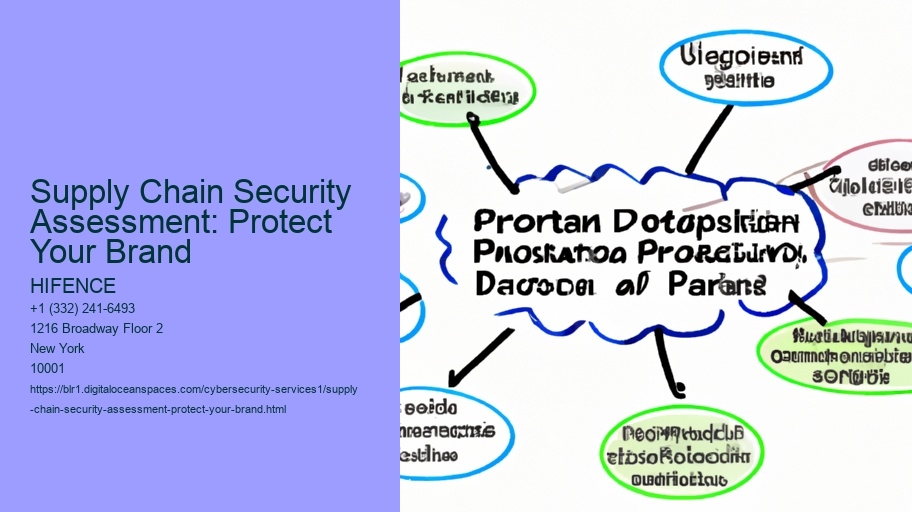Understanding Supply Chain Vulnerabilities
Understanding Supply Chain Vulnerabilities: Protecting Your Brand
Our supply chains (the intricate networks that bring us everything from our morning coffee to our latest gadgets) are increasingly complex and, unfortunately, increasingly vulnerable. A supply chain security assessment isnt just a nice-to-have; its a crucial shield for your brands reputation and bottom line. Think of it as a health check for your entire operation, identifying potential weaknesses before they can be exploited.
What exactly are these vulnerabilities? They can take many forms. Imagine a single point of failure (a critical supplier, perhaps) suddenly experiencing a disruption. This could be due to a natural disaster, a cyberattack, or even political instability. Suddenly, your production grinds to a halt! Or consider the risk of counterfeit goods infiltrating your supply chain; this not only damages your brands integrity but can also pose serious health and safety risks to consumers.
Another key vulnerability lies in information security. Think about all the sensitive data exchanged throughout your supply chain (product designs, customer information, financial details). A breach at any point in the chain can expose your company to significant financial and legal repercussions. managed it security services provider Furthermore, ethical sourcing is a growing concern. Consumers are increasingly demanding transparency and accountability, and a scandal involving forced labor or environmental damage within your supply chain can devastate your brand image!
By proactively assessing these vulnerabilities, you can implement preventative measures (diversifying suppliers, strengthening cybersecurity protocols, conducting thorough supplier audits). This isnt just about avoiding problems; its about building resilience and demonstrating your commitment to responsible and ethical practices. A robust supply chain security assessment protects your brand, maintains customer trust, and ultimately, safeguards your success!
Key Elements of a Security Assessment
Lets talk about Supply Chain Security Assessments and why they matter for protecting your brand! Think of your supply chain as a long, winding road with many stops along the way (manufacturers, distributors, suppliers, etc.). If one of those stops has a security weakness, it could compromise the whole chain, impacting your brands reputation and bottom line. Thats where a security assessment comes in!
So, what are the key elements of a good supply chain security assessment? First, you need a clear scope and objectives. What parts of the supply chain are you assessing? What are you trying to achieve (identifying vulnerabilities, ensuring compliance, etc.)? Without this, youre just wandering aimlessly.
Next up is risk identification. This involves looking at potential threats and vulnerabilities at each stage of your supply chain. Are your suppliers using secure data handling practices? Are their facilities physically secure? What are the potential impacts if something goes wrong (data breach, product counterfeiting, supply disruption)? It's like playing detective, trying to anticipate where the problems might be!
Then comes vulnerability assessment.
Supply Chain Security Assessment: Protect Your Brand - managed service new york
- managed services new york city
- managed service new york
- managed it security services provider
- managed services new york city
- managed service new york
- managed it security services provider
- managed services new york city
- managed service new york
- managed it security services provider
- managed services new york city
Supplier due diligence is also crucial. This means thoroughly vetting your suppliers before you even start working with them. Check their security certifications, review their security policies, and ask for references. Think of it as background checking for your business partners.

Finally, you need a remediation plan. The assessment is only useful if you act on the findings! This involves prioritizing the identified risks and developing a plan to address them. This could mean implementing new security controls, providing training to suppliers, or even terminating relationships with suppliers who pose an unacceptable risk.
Supply Chain Security Assessment: Protect Your Brand - managed service new york
- check
- managed services new york city
- managed it security services provider
- check
- managed services new york city
- managed it security services provider
- check
- managed services new york city
- managed it security services provider
- check
- managed services new york city
- managed it security services provider
- check
- managed services new york city
managed it security services provider
Remember, supply chain security isnt a one-time thing (its an ongoing process!).
Supply Chain Security Assessment: Protect Your Brand - managed it security services provider
- managed services new york city
- check
- managed it security services provider
- managed services new york city
- check
- managed it security services provider
- managed services new york city
Risk Identification and Prioritization
Risk identification and prioritization – these are the cornerstones of any solid supply chain security assessment aimed at protecting your brand. Think of it like this: youre building a fortress (your brand), and your supply chain is the land around it. managed it security services provider You need to know where the weaknesses are!
Risk identification is all about uncovering potential threats (and there are many!). Its a process of systematically identifying vulnerabilities within your supply chain that could expose your brand to harm. (This might involve brainstorming sessions, supplier questionnaires, or even simulated attacks). Were talking about everything from counterfeit products sneaking in (a major brand reputation killer!) to data breaches exposing sensitive customer information, or even disruptions caused by natural disasters affecting key suppliers. The goal is to create a comprehensive list of all the things that could go wrong.
But simply identifying risks isnt enough.
Supply Chain Security Assessment: Protect Your Brand - managed service new york
- managed service new york
- managed it security services provider
- managed service new york
- managed it security services provider
- managed service new york
By systematically identifying and prioritizing risks, you can proactively strengthen your supply chain, protect your brands reputation, and ultimately, safeguard your bottom line! It's a critical step in building a resilient and secure supply chain – one that can withstand the inevitable challenges in today's complex global environment.
Implementing Security Controls and Best Practices
Implementing Security Controls and Best Practices is absolutely vital when were talking about a Supply Chain Security Assessment – especially if you want to Protect Your Brand! Think of your supply chain as a long, interconnected chain (obviously!) and each link represents a different supplier, manufacturer, or distributor. If even one of those links is weak, it can be exploited, leading to data breaches, counterfeit products, or even disruptions in service.
So, what does "Implementing Security Controls and Best Practices" actually mean? Its about putting safeguards in place (like firewalls, access controls, and encryption) to protect sensitive information and assets throughout the entire supply chain. For example, you might require your suppliers to undergo regular security audits (a proactive measure!). You might also implement strict access controls to limit who can access what data.

Best practices also include things like vendor risk management (assessing the security posture of your suppliers before you even partner with them!), incident response planning (knowing what to do if something goes wrong!), and ongoing monitoring (keeping a close eye on things). Its not a one-time thing; its a continuous process of assessment, improvement, and adaptation. Ignoring this is like leaving your front door unlocked (a big no-no!).
Ultimately, a robust security strategy protects your brands reputation (a priceless asset!). Customers trust brands that take security seriously, and a supply chain breach can erode that trust very quickly. managed services new york city Investing in security controls and best practices isnt just about protecting data; its about protecting your brands integrity and ensuring its long-term success!
Technology Solutions for Enhanced Security
Supply Chain Security Assessment: Protect Your Brand through Technology Solutions
In todays interconnected world, a companys brand reputation is intricately linked to the security of its supply chain. A single breach, a counterfeit product, or a compromised component can inflict lasting damage (think reputational hits and financial losses!). A robust supply chain security assessment is no longer a luxury, but a necessity for safeguarding your brand and ensuring business continuity.
Technology solutions play a pivotal role in enhancing security throughout the supply chain. Were not just talking about fancy gadgets; were talking about integrated systems that provide visibility, traceability, and control. For example, blockchain technology (yes, the one often associated with cryptocurrency!) can create an immutable record of transactions, making it harder for counterfeit goods to infiltrate the system. Imagine knowing exactly where every component of your product originated and who handled it along the way.
Furthermore, advanced analytics and AI-powered threat detection systems can identify anomalies and potential risks before they escalate into major problems. These systems can monitor supplier performance, detect suspicious activity, and even predict potential disruptions based on real-time data. Think of it as having a 24/7 security guard watching over your entire supply chain.
And lets not forget the importance of secure communication and data sharing platforms. These platforms ensure that sensitive information (like product designs and supplier contracts) is protected from unauthorized access. Cloud-based solutions, with their robust security protocols, are becoming increasingly popular for facilitating secure collaboration among supply chain partners.
Ultimately, investing in technology solutions for enhanced security is an investment in your brands future. It demonstrates a commitment to quality, authenticity, and ethical sourcing, which resonates with consumers and builds trust. By proactively addressing supply chain vulnerabilities, you can protect your brand from reputational damage, financial losses, and legal liabilities. Its a win-win situation!
Monitoring, Auditing, and Continuous Improvement
Supply Chain Security Assessment: Protect Your Brand hinges on three crucial pillars: Monitoring, Auditing, and Continuous Improvement. Think of it like this (a well-oiled machine, constantly checked and tweaked). Monitoring involves keeping a watchful eye on your entire supply chain. Its about actively tracking key performance indicators (KPIs) related to security, such as supplier compliance, incident reports, and potential vulnerabilities. Are shipments being tracked properly? Are security protocols being followed at each stage (from manufacturing to delivery)? This constant vigilance helps identify problems early on, before they escalate.
Auditing, on the other hand, is a more formal, periodic review (like a health check-up for your supply chain). It involves assessing the effectiveness of your security controls, policies, and procedures. Are your suppliers adhering to your security standards? Are your internal processes robust enough to prevent breaches? Audits can be internal or external, and they provide a detailed snapshot of your security posture.
But monitoring and auditing are only valuable if they lead to Continuous Improvement (the engine that drives lasting security). This means taking the insights gained from monitoring and audits and using them to refine your security practices. Did an audit reveal a weakness in a particular suppliers security? Work with them to address it. Are monitoring tools flagging a recurring issue? Adjust your processes to mitigate the risk. Continuous Improvement is not a one-time fix; its an ongoing commitment to strengthening your supply chain security and protecting your brand!
Responding to and Recovering from Security Incidents
Responding to and Recovering from Security Incidents: Protecting Your Brand
Imagine the unthinkable happens: your supply chain, the very backbone of your business, suffers a security breach. What do you do? Panicking is understandable (for a moment!), but decisive action is crucial to protect your brand. Responding to and recovering from security incidents in your supply chain is not just about fixing the immediate problem; its about safeguarding your reputation, maintaining customer trust, and ensuring long-term business viability.
The initial response must be swift and coordinated. This means having a pre-defined incident response plan (a documented strategy is your best friend!) that everyone understands. The plan should outline clear roles and responsibilities, communication protocols, and escalation procedures.
Supply Chain Security Assessment: Protect Your Brand - managed services new york city
- managed it security services provider
- managed it security services provider
- managed it security services provider
- managed it security services provider
- managed it security services provider
- managed it security services provider
- managed it security services provider
- managed it security services provider
- managed it security services provider
- managed it security services provider
Recovery goes beyond simply patching the vulnerability. It involves a thorough assessment of the damage, identifying the root cause of the incident (was it a vendors negligence? A software flaw?), and implementing corrective actions to prevent recurrence. This might involve strengthening security protocols across the entire supply chain, requiring stricter vendor compliance, investing in better monitoring systems, or enhancing employee training. Remember, transparency is important. Communicating honestly with customers, partners, and stakeholders (while carefully managing sensitive information) can build trust and mitigate reputational damage.
Ultimately, responding to and recovering from security incidents is about building resilience. Its about learning from mistakes, adapting to evolving threats, and creating a culture of security awareness throughout your supply chain. A strong recovery not only fixes the immediate problem but also strengthens your brand and prepares you for future challenges!
